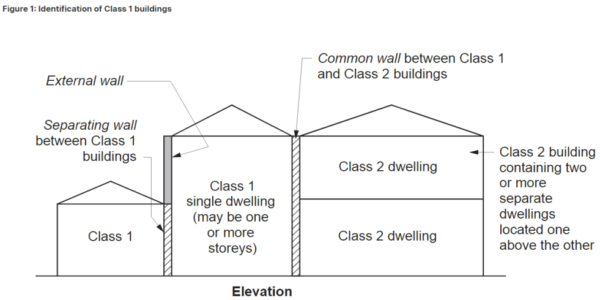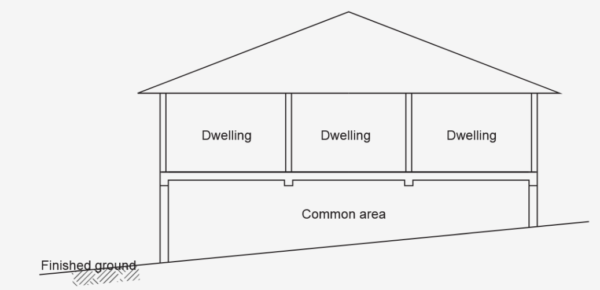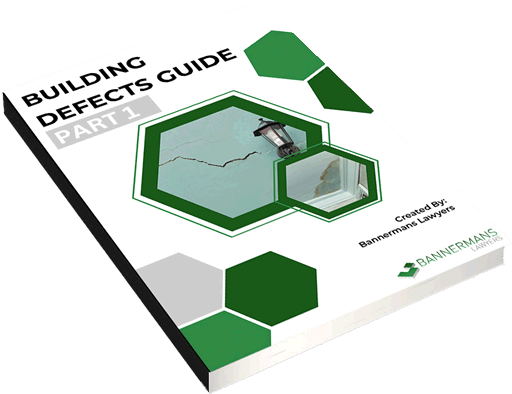What is a Class 1 and what is a Class 2 Building?
Posted 07 October 2022
Category: Strata, Building Defects, eBooks
Design and Building Practitioners Act Compliance Quiz
Find out whether your planned works need to comply with the Design and Building Practitioners Act 2020.
Answer: The answer comes from Volume 1 of Part A6 of the National Construction Code (NCC) 2019:
“A6.1 Class 1 buildings
A Class 1 building includes one or more of the following sub-classifications:
- Class 1a is one or more buildings, which together form a single dwelling including the following:
- A detached house.
- One of a group of two or more attached dwellings, each being a building, separated by a fire-resisting wall, including a row house, terrace house, town house or villa unit.
- Class 1b is one or more buildings which together constitute—
-
- a boarding house, guest house, hostel or the like that—
-
-
- would ordinarily accommodate not more than 12 people; and
- have a total area of all floors not more than 300 m2 (measured over the enclosing walls of the building or buildings); or
-
- four or more single dwellings located on one allotment and used for short-term holiday accommodation.
Limitation 1:
For A6.1, a Class 1 building cannot be located above or below another dwelling or another Class of building, other than a private garage.”
The below figure provided in the NCC assists in comparing the two classes:


© Commonwealth of Australia and the States and Territories 2020, published by the Australian Building Codes Board.
“A6.2 Class 2 buildings
- A Class 2 building is a building containing two or more sole-occupancy units.
- Each sole-occupancy unit in a Class 2 building must be a separate dwelling.”
“Sole-occupancy unit means a room or other part of a building for occupation by one or joint owner, lessee, tenant, or other occupier to the exclusion of any other owner, lessee, tenant, or other occupier and includes—
- a dwelling; or
- a room or suite of rooms in a Class 3 building which includes sleeping facilities; or
- a room or suite of associated rooms in a Class 5, 6, 7, 8 or 9 building; or
- a room or suite of associated rooms in a Class 9c building, which includes sleeping facilities and any area for the exclusive use of a resident.”
Generally strata schemes will be class 2, however not always. Where, for instance, the strata schemes is comprised of townhouses, taking the above example, a townhouse would typically be class 1 as it is one dwelling located within one building, to be contrasted with class two, which contains two or more dwellings within the one building.
However, where there is any common property area below, they are Class 2, regardless of whether the common property area is a storey or not. See figure below:


© Commonwealth of Australia and the States and Territories 2020, published by the Australian Building Codes Board.
The definitions for each of the building classes can be found in the National Construction Code Volume 1 which is found at https://ncc.abcb.gov.au.
Design and Building Practitioners Act Compliance Quiz
Find out whether your planned works need to comply with the Design and Building Practitioners Act 2020.
Advice on the Design & Building Practitioners Act
All
Related Articles
What if my works are done without planning approval or don’t comply with the Design and Building Practitioners Legislation?
Building Defects: Who Pays
A history of the cases exploring the duty of care under the Design & Building Practitioners Act 2020
***The information contained in this article is general information only and not legal advice. The currency, accuracy and completeness of this article (and its contents) should be checked by obtaining independent legal advice before you take any action or otherwise rely upon its contents in any way.

This is an extract from our Bannermans Building Defects Guide – Part 1.
To access more FAQ'S on Building Defects fill in the below form to download our Bannermans Building Defects Guide – Part 1 for free.





